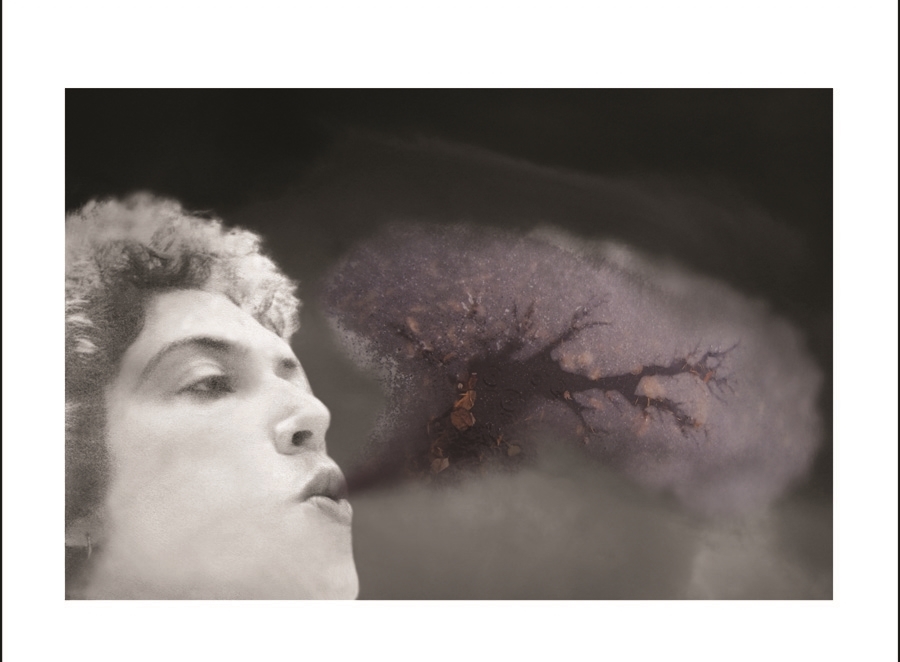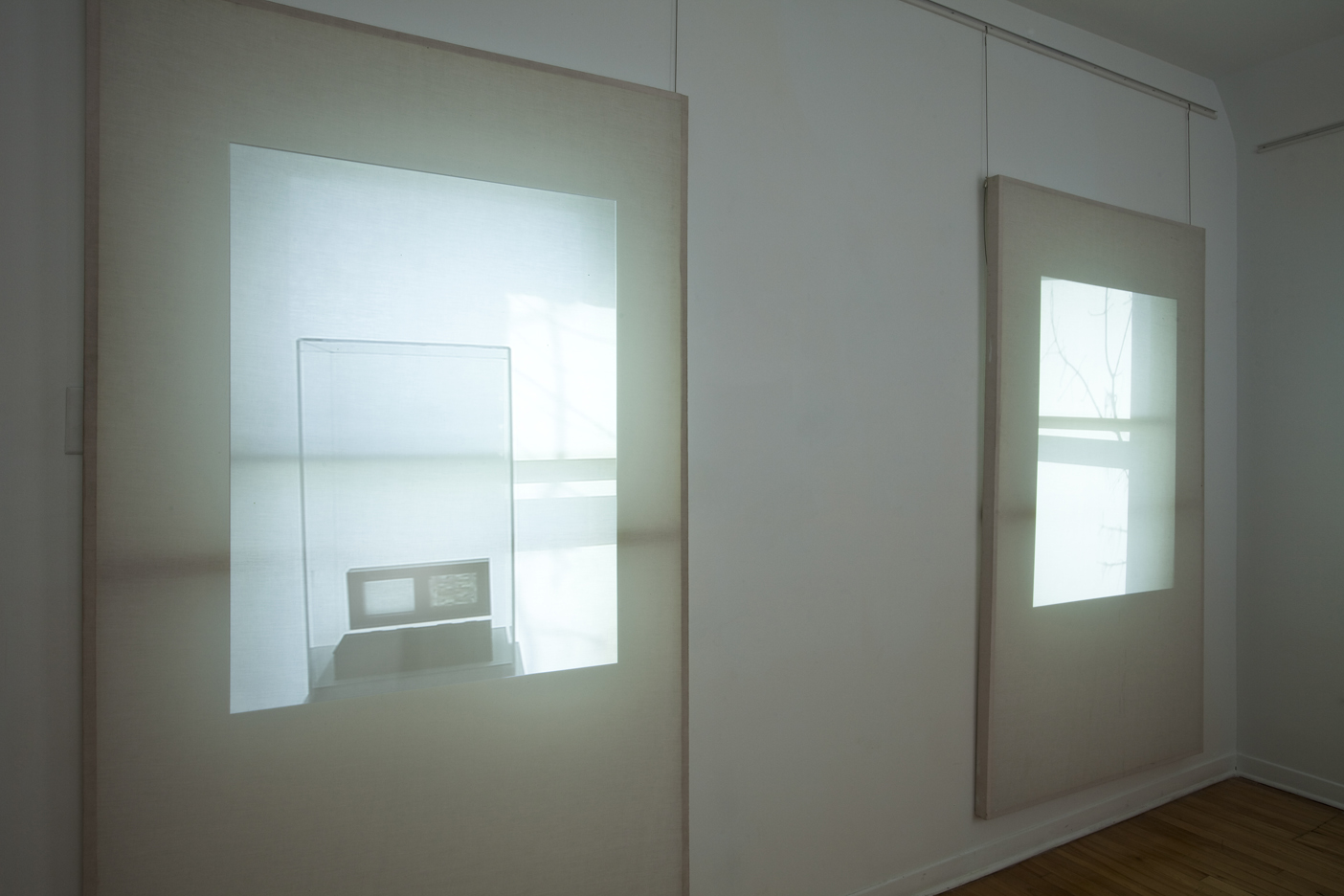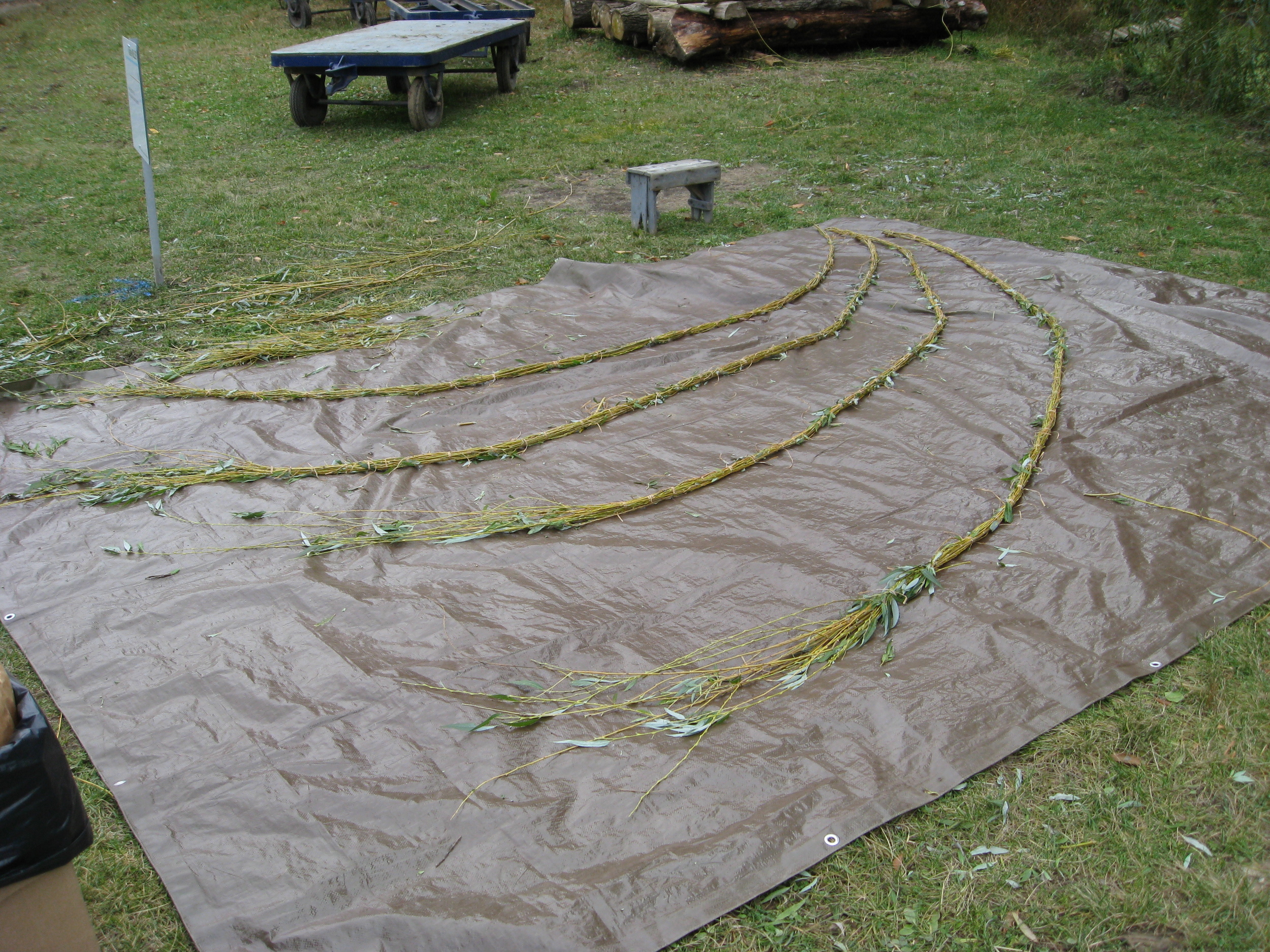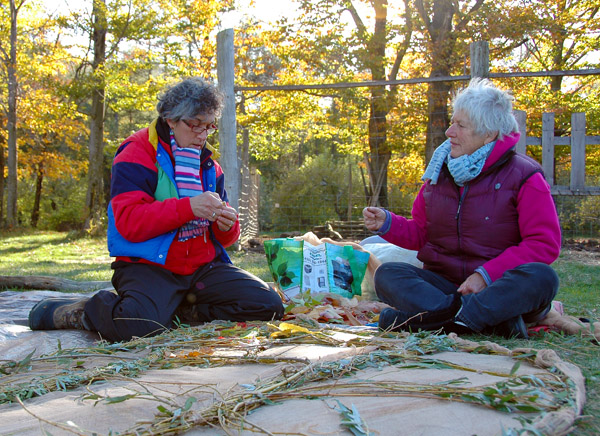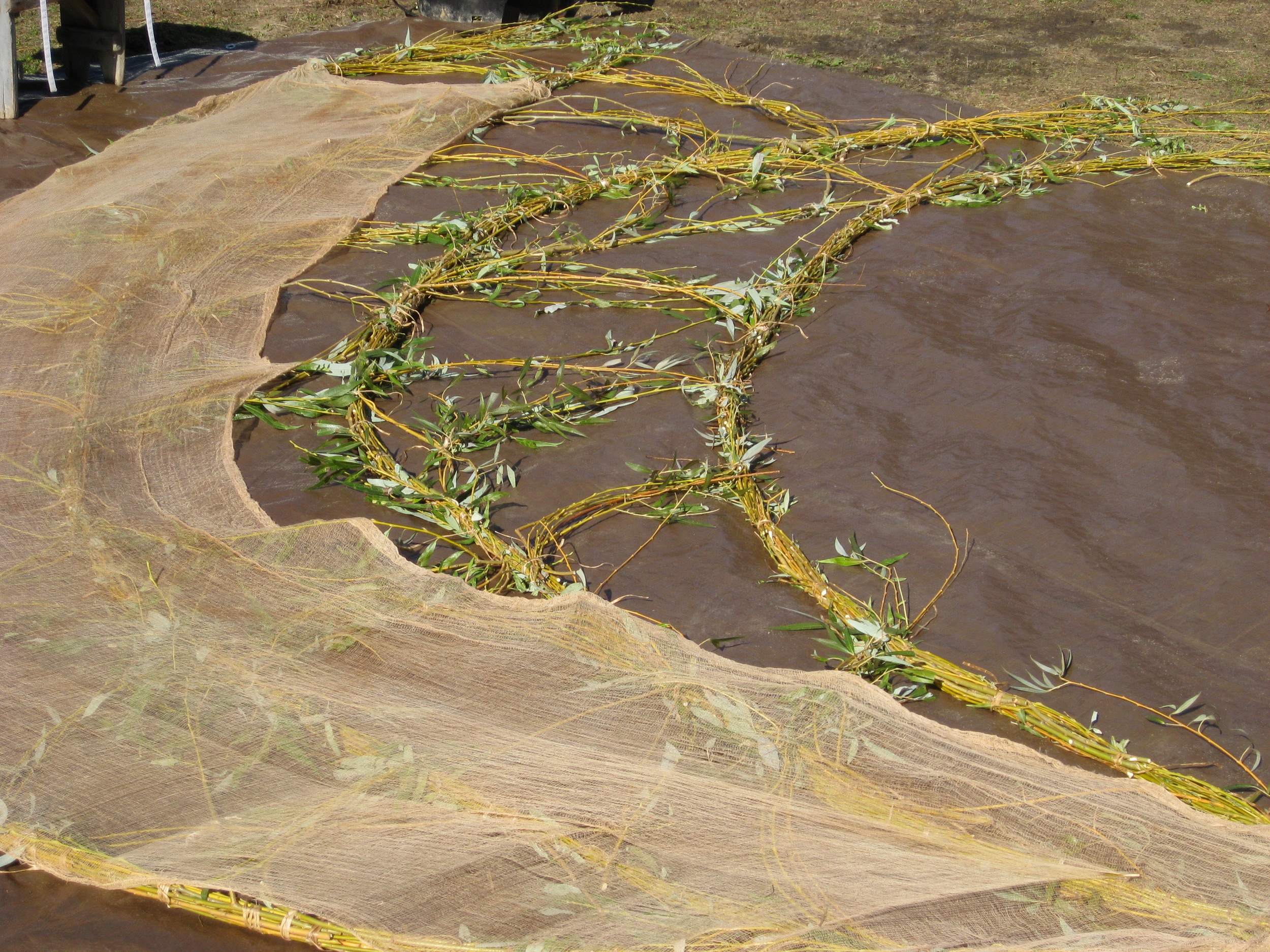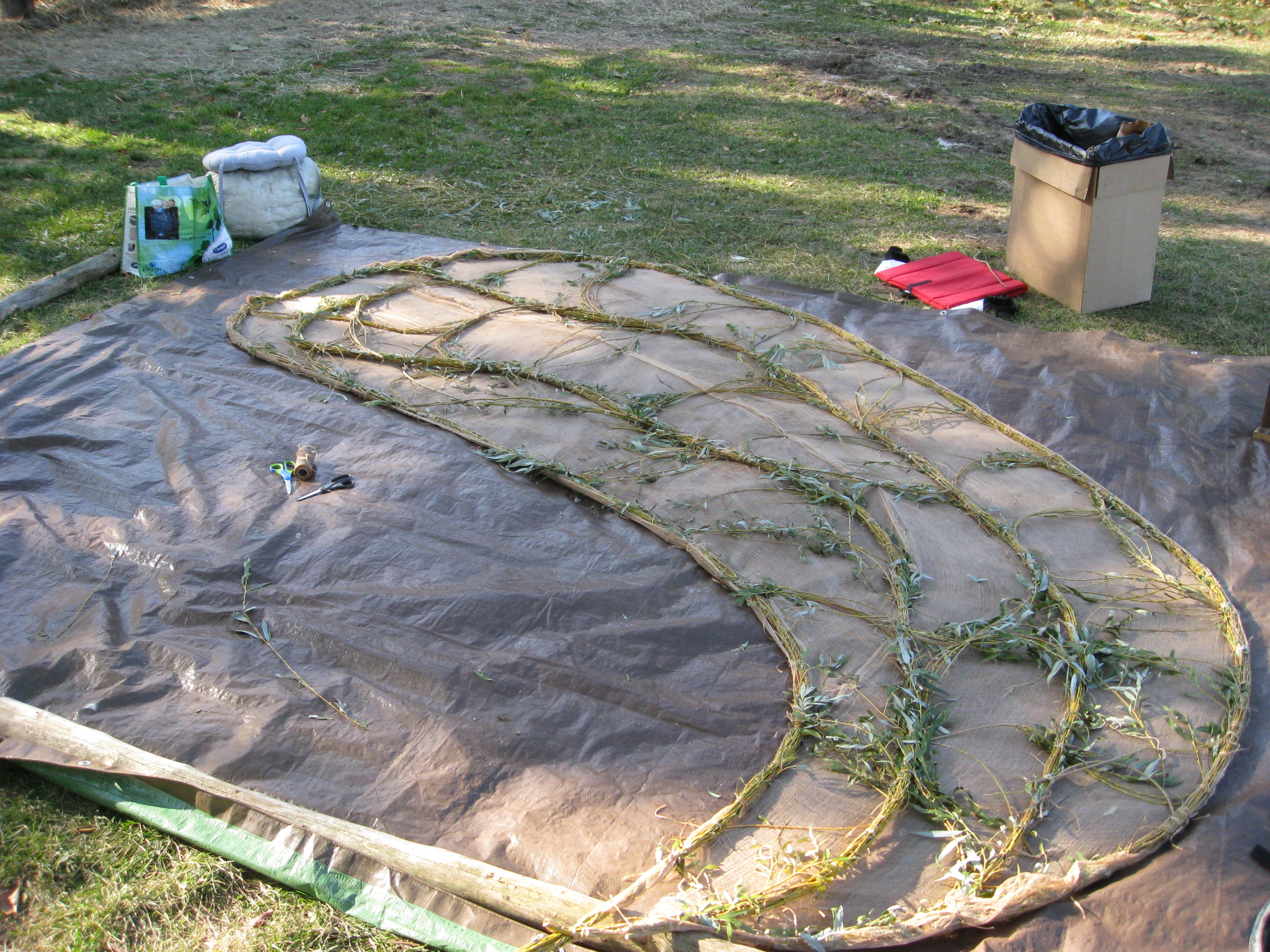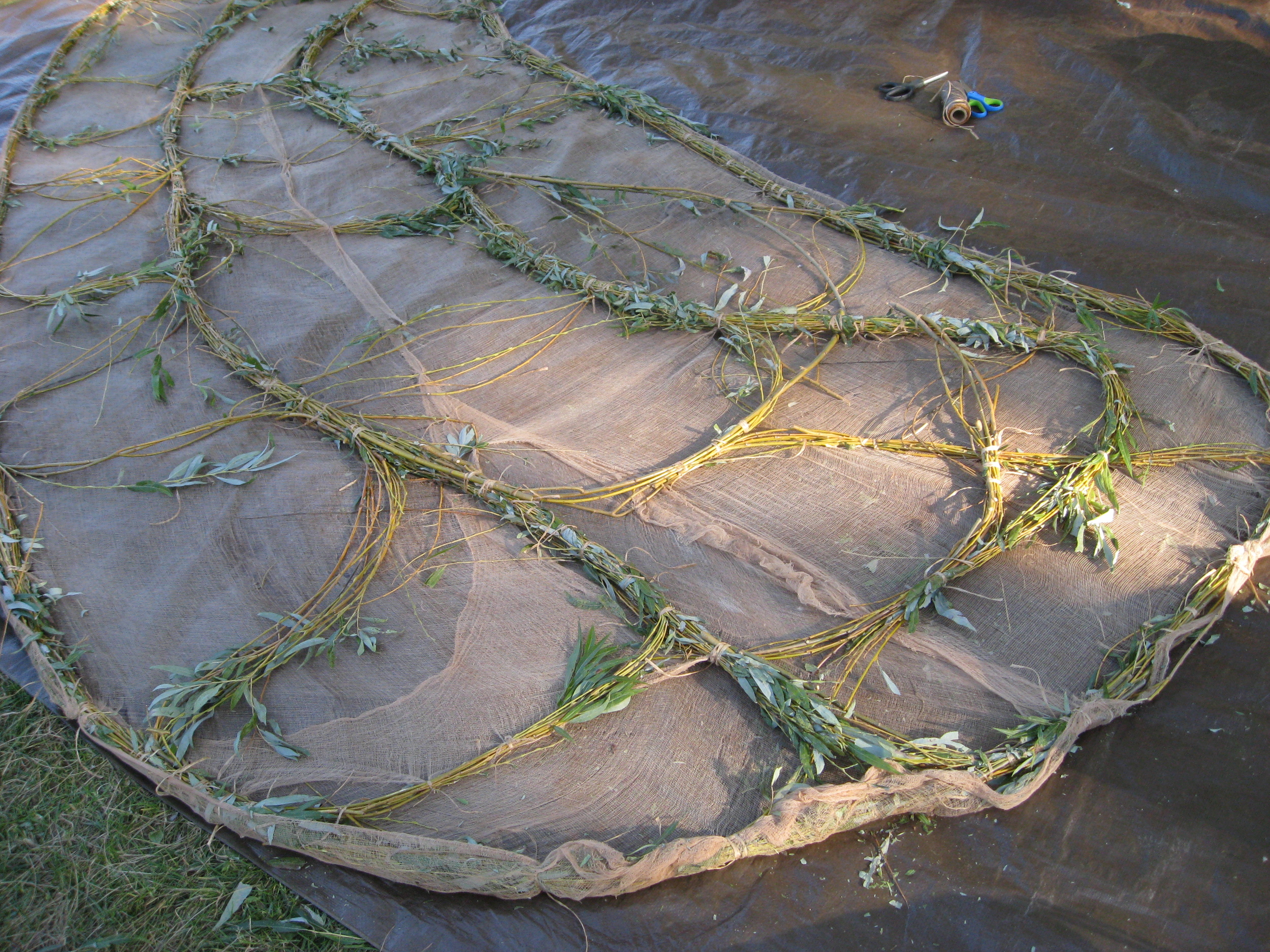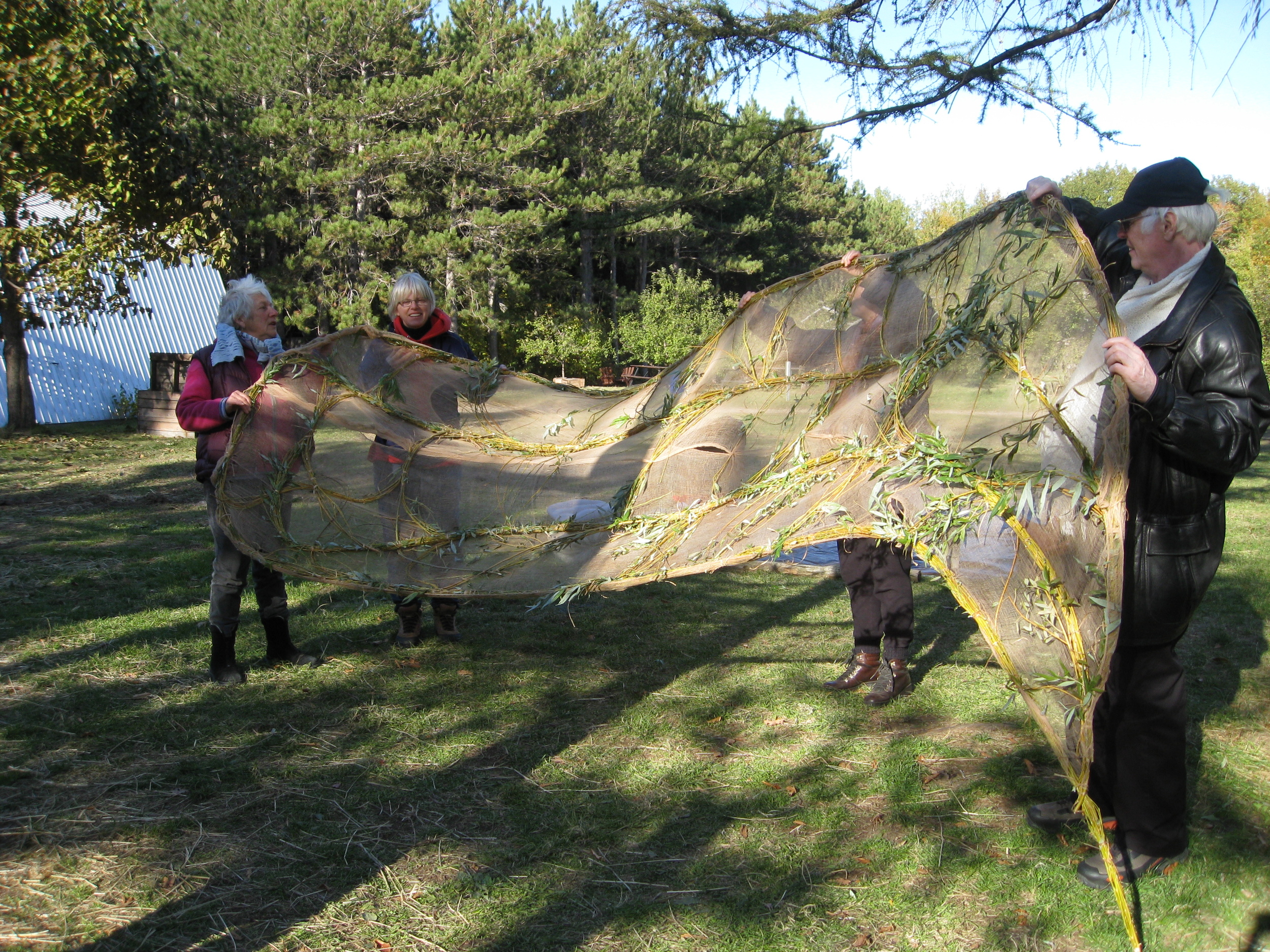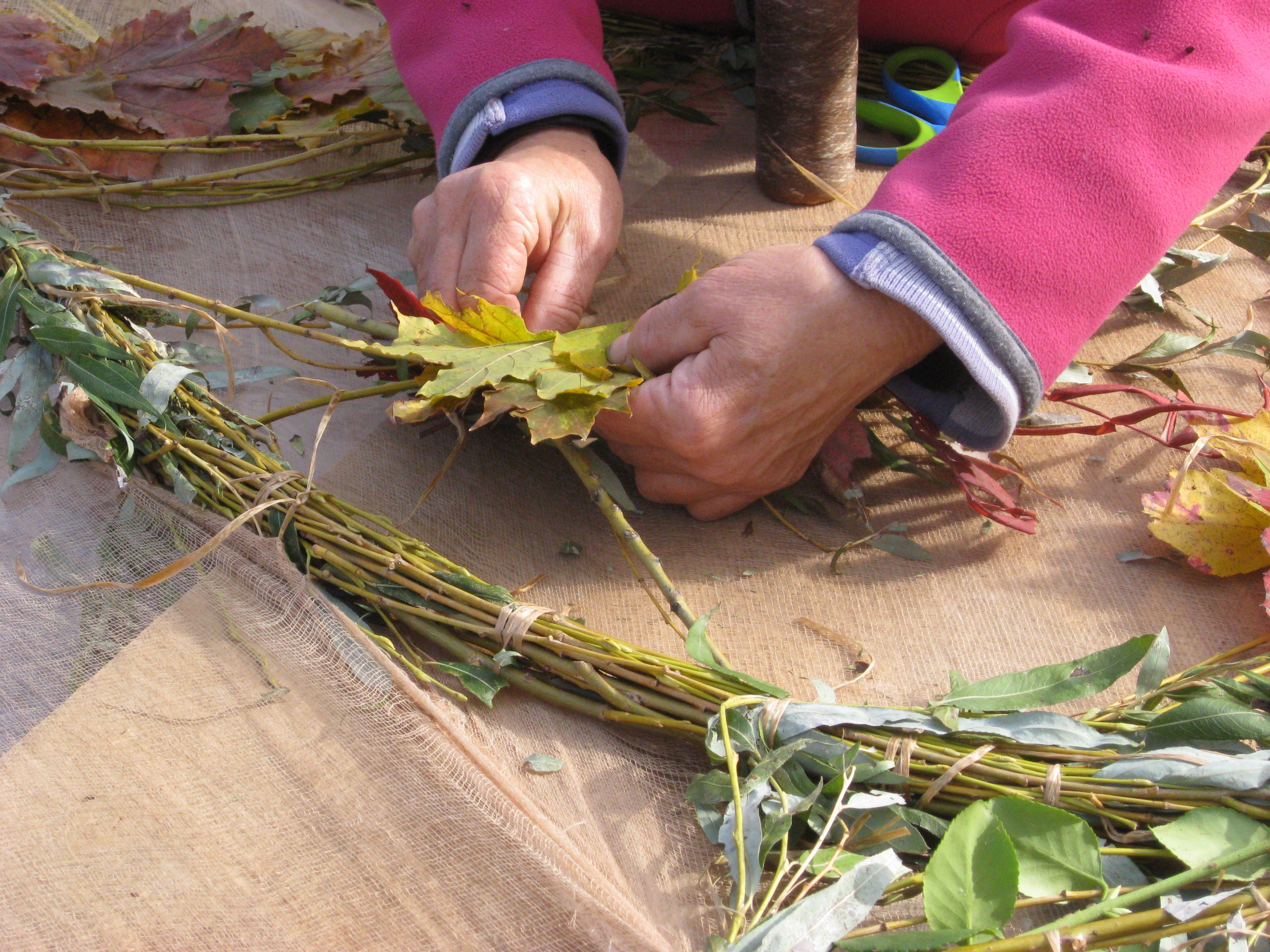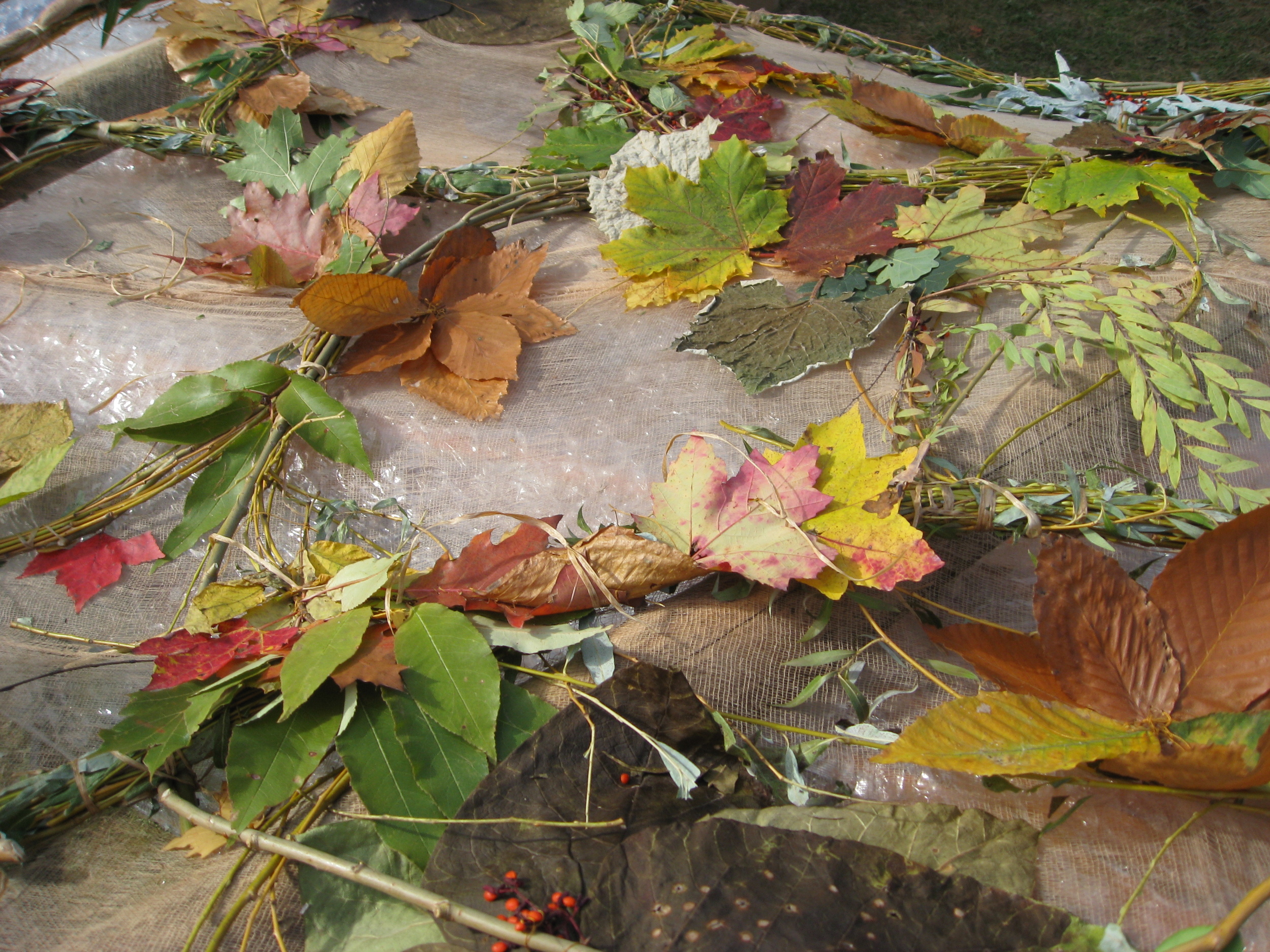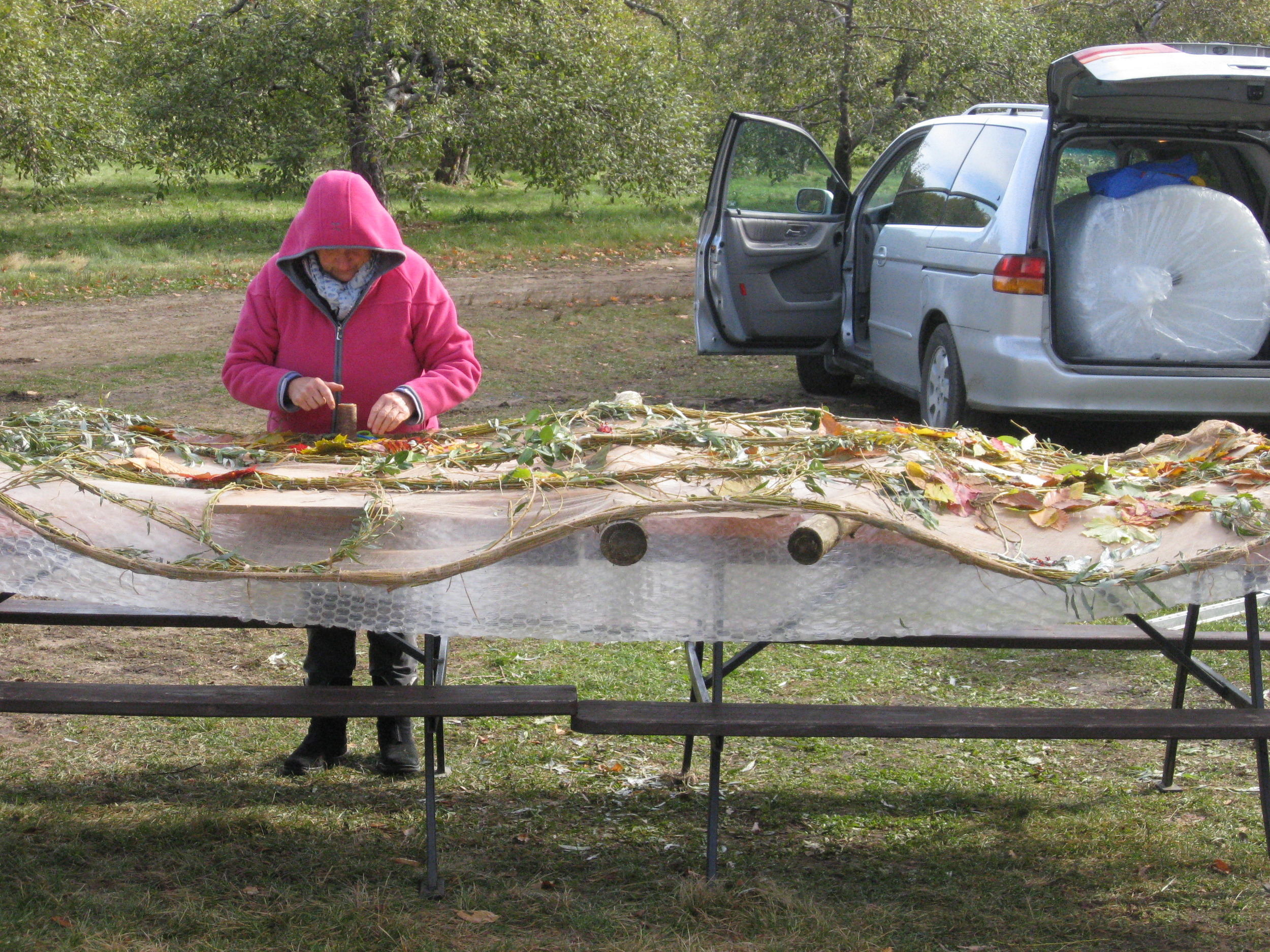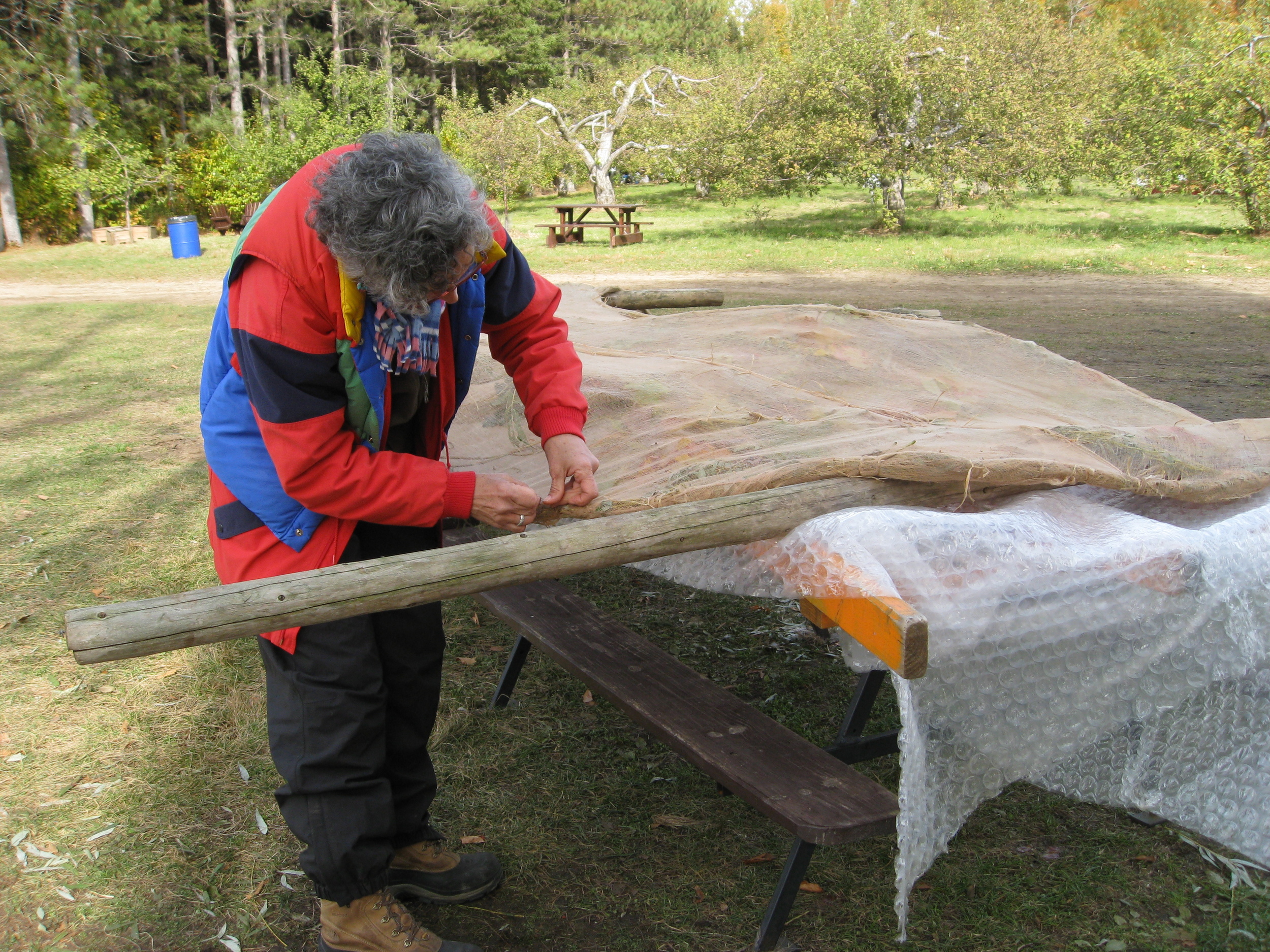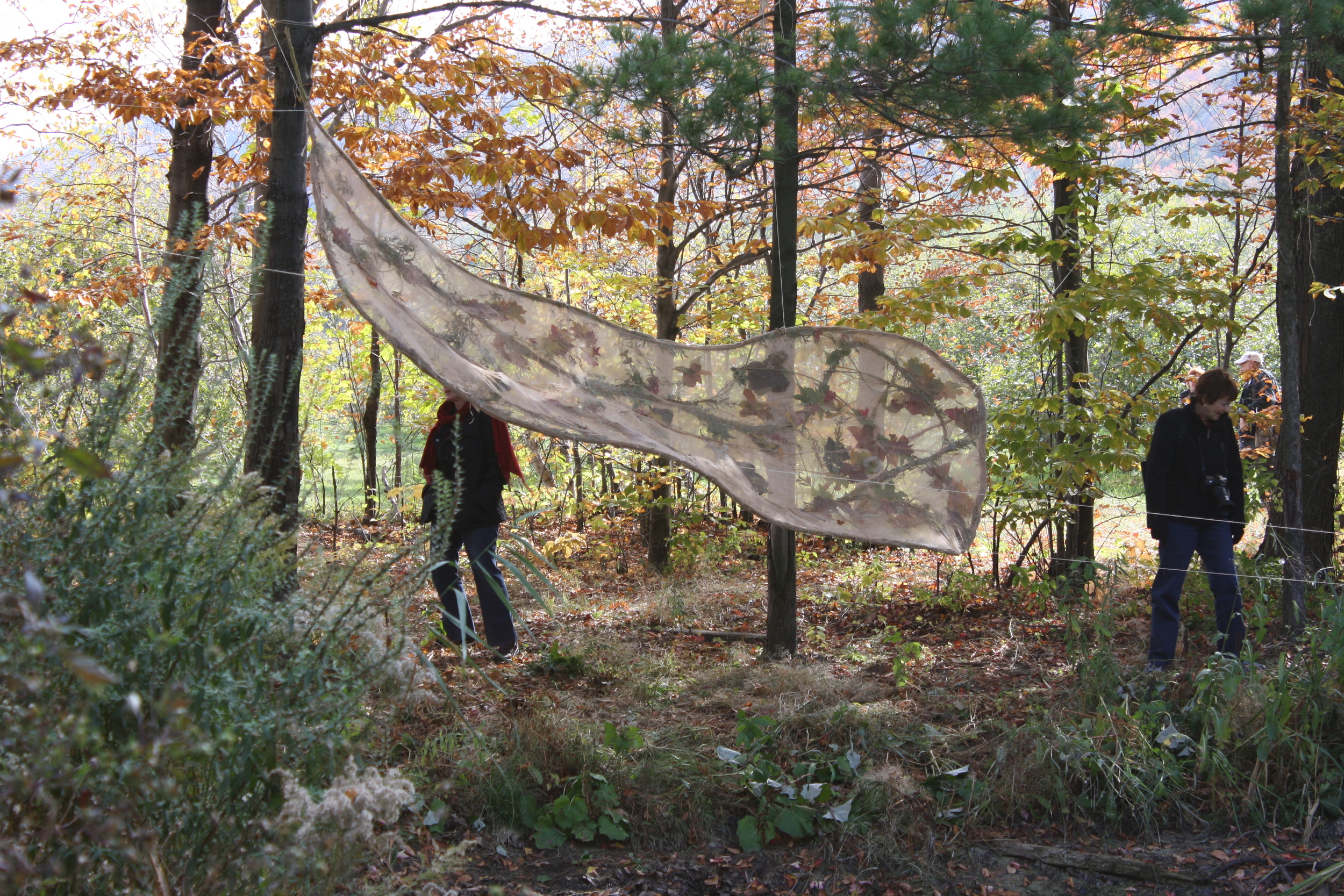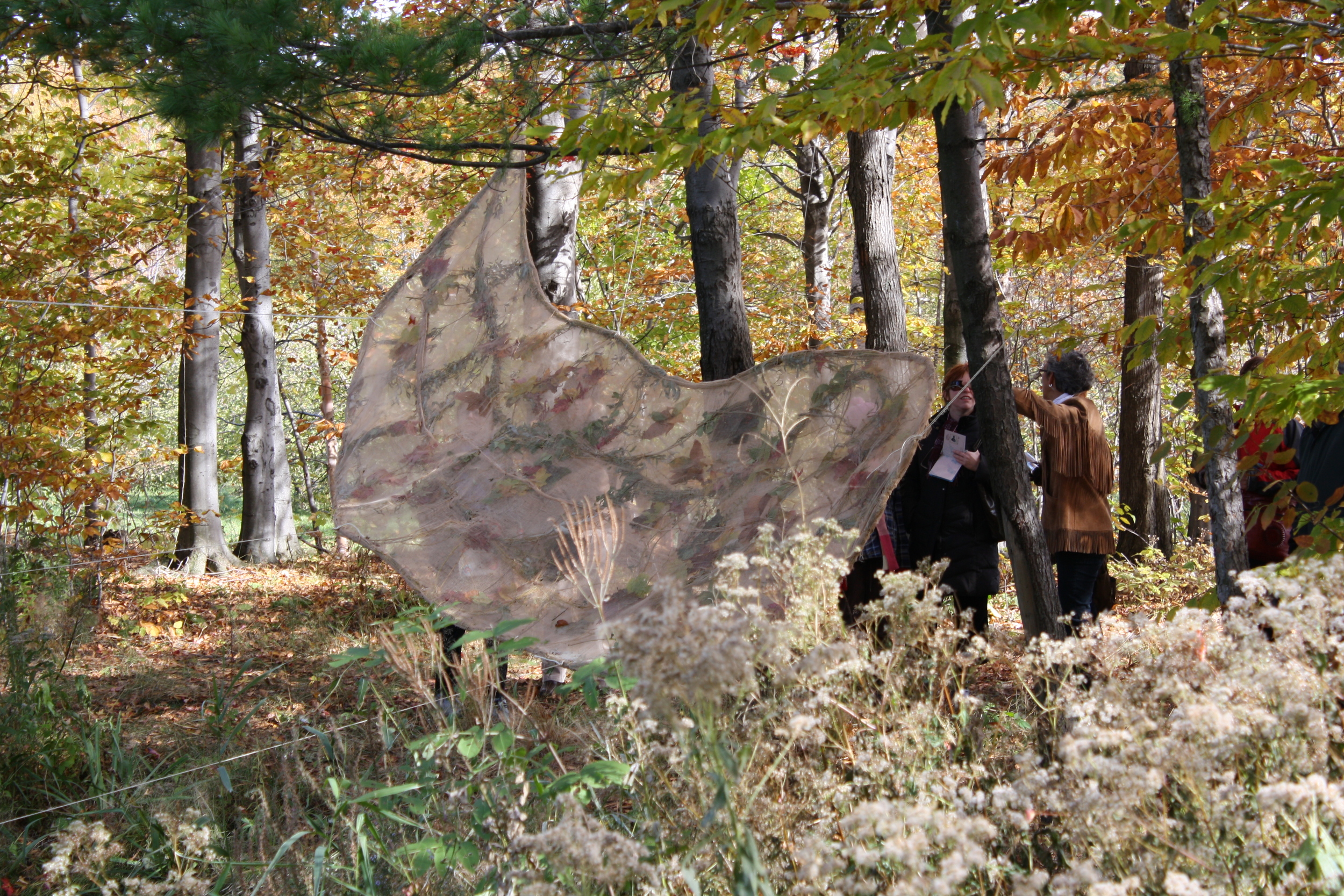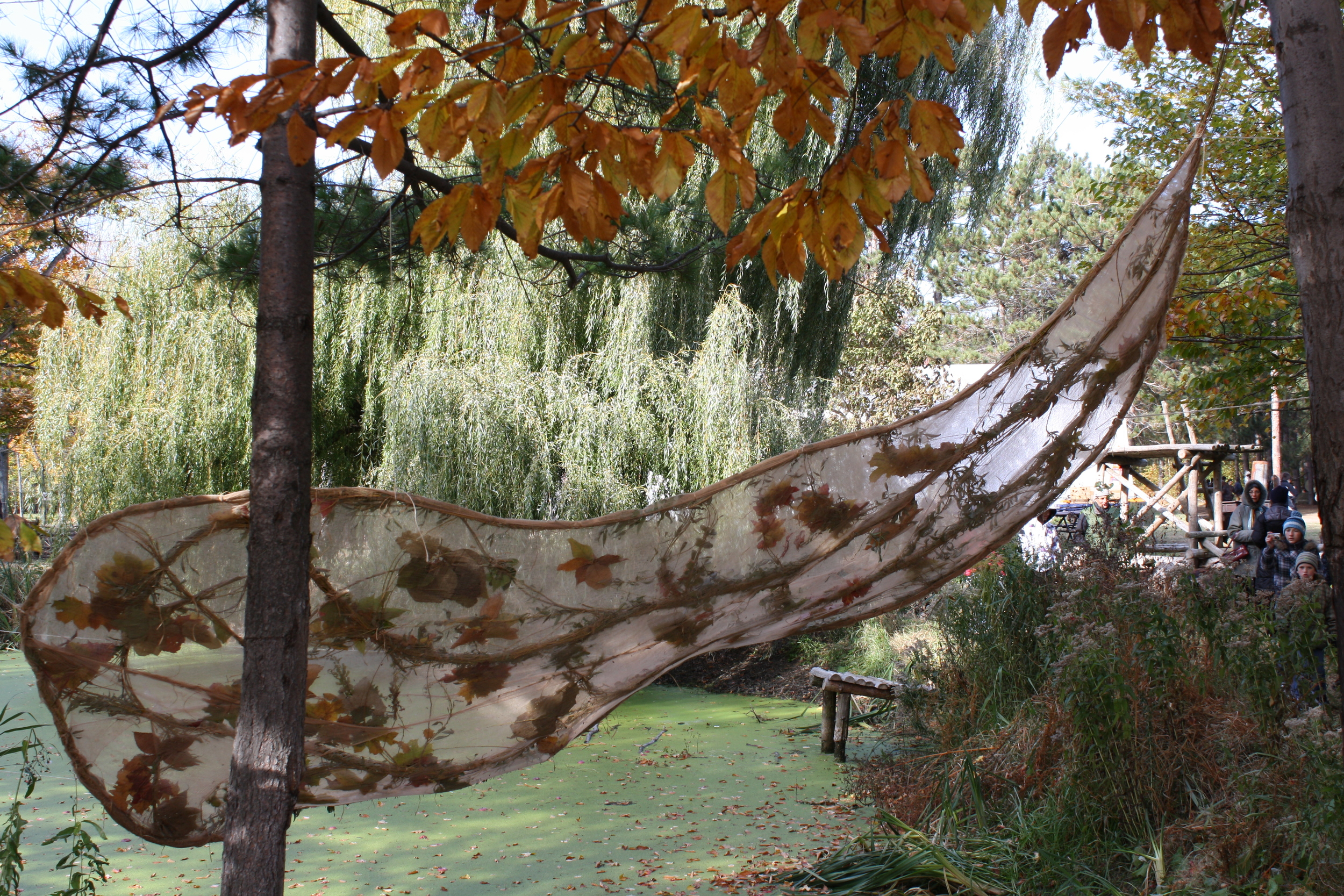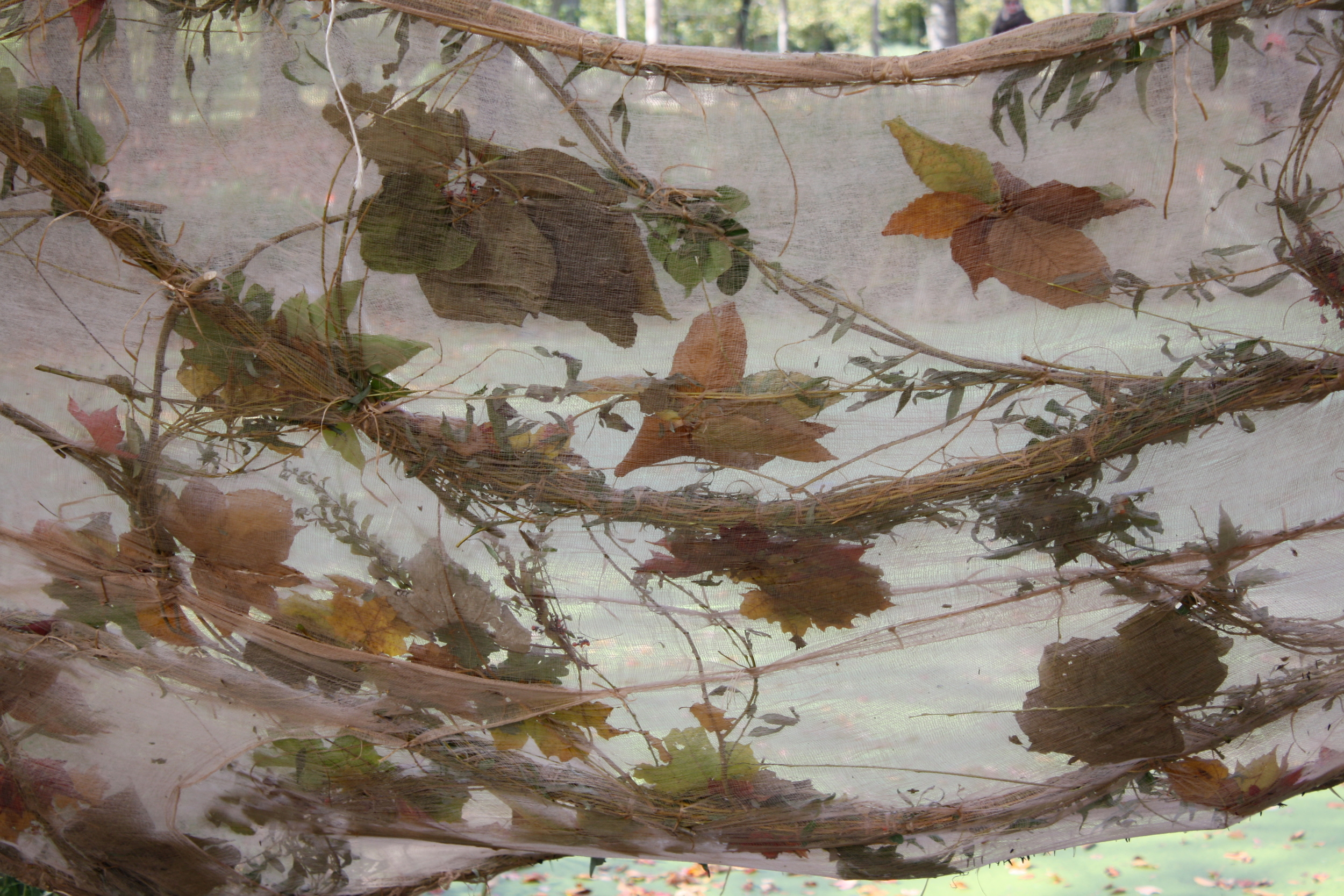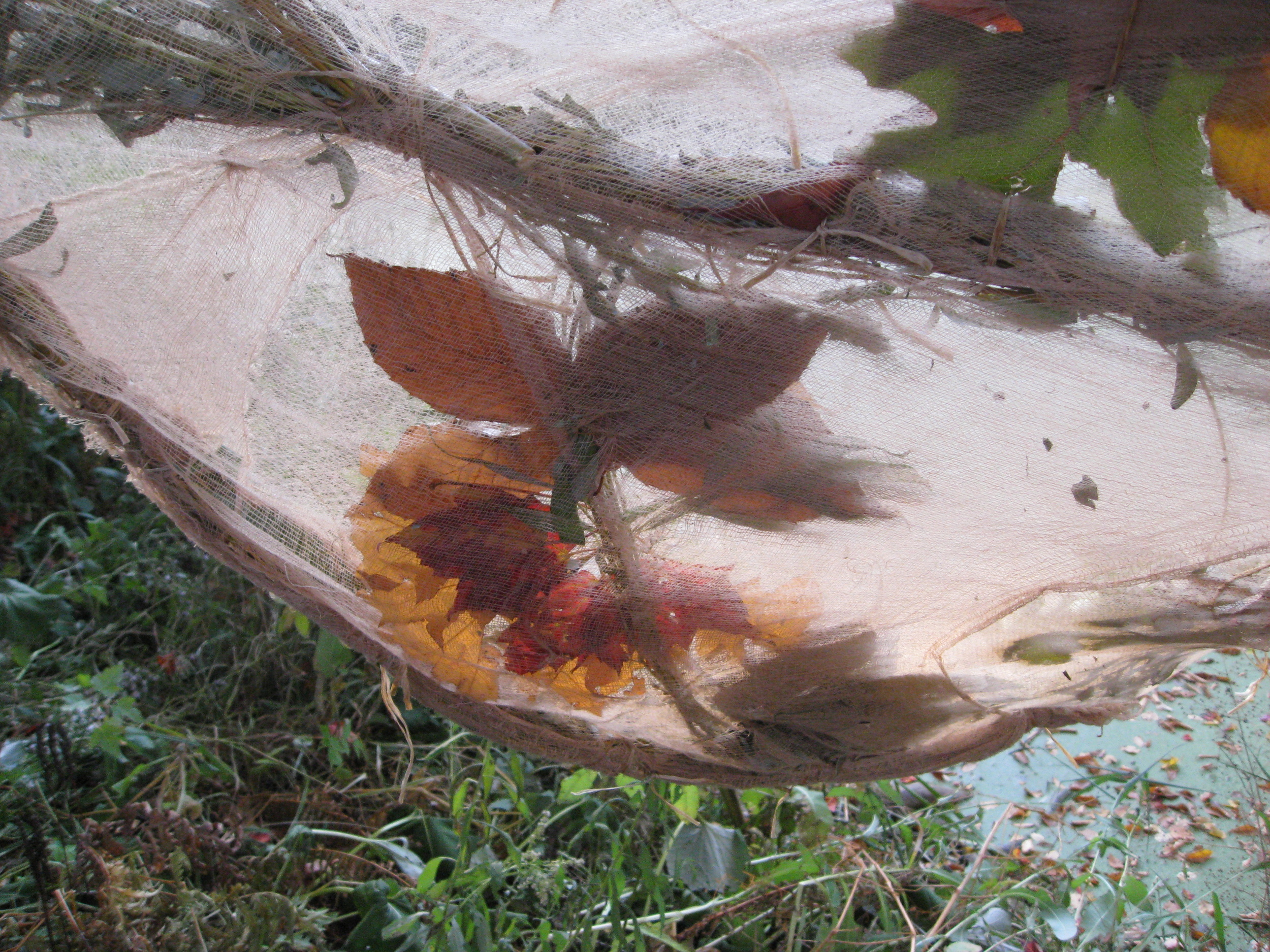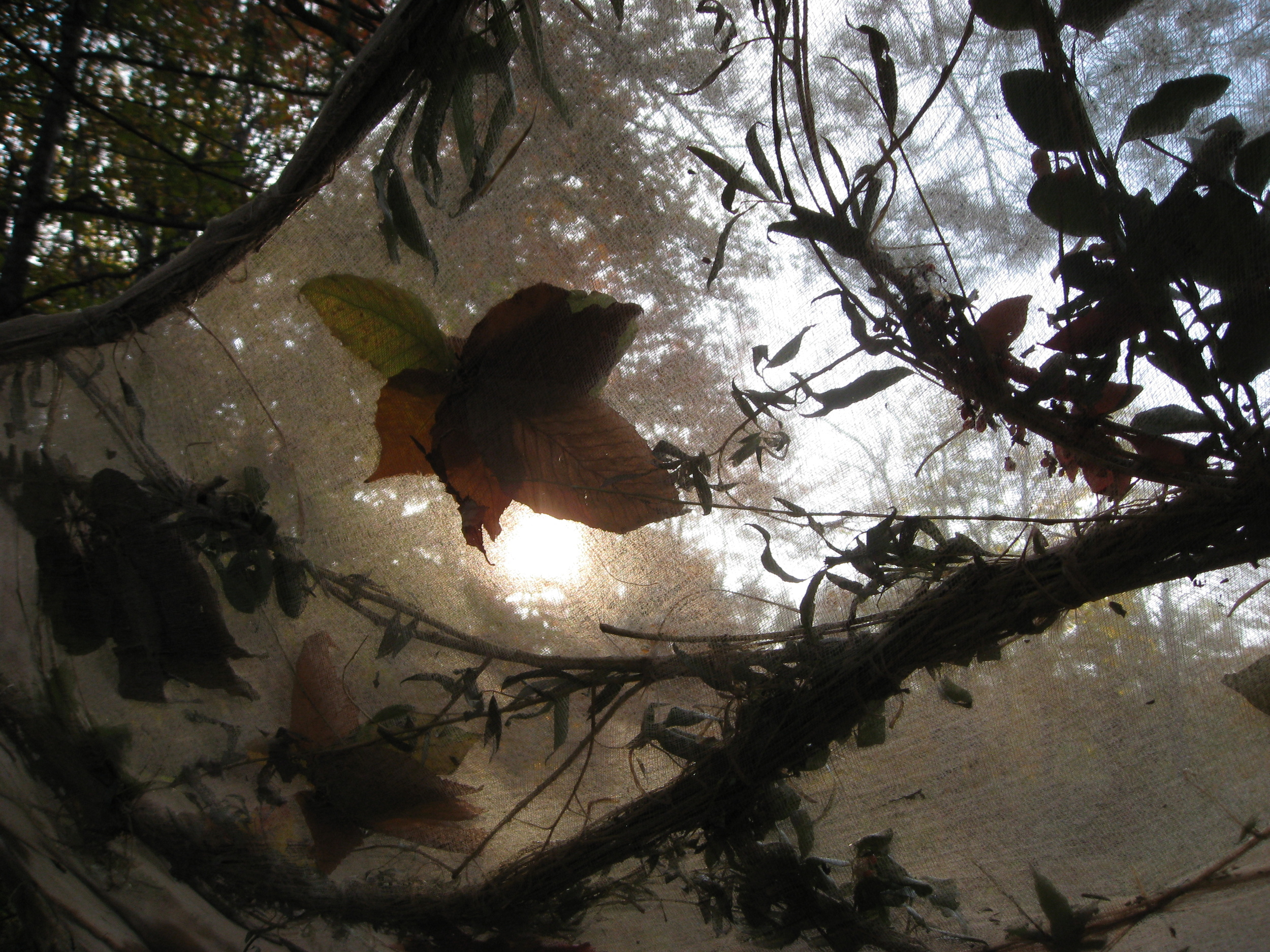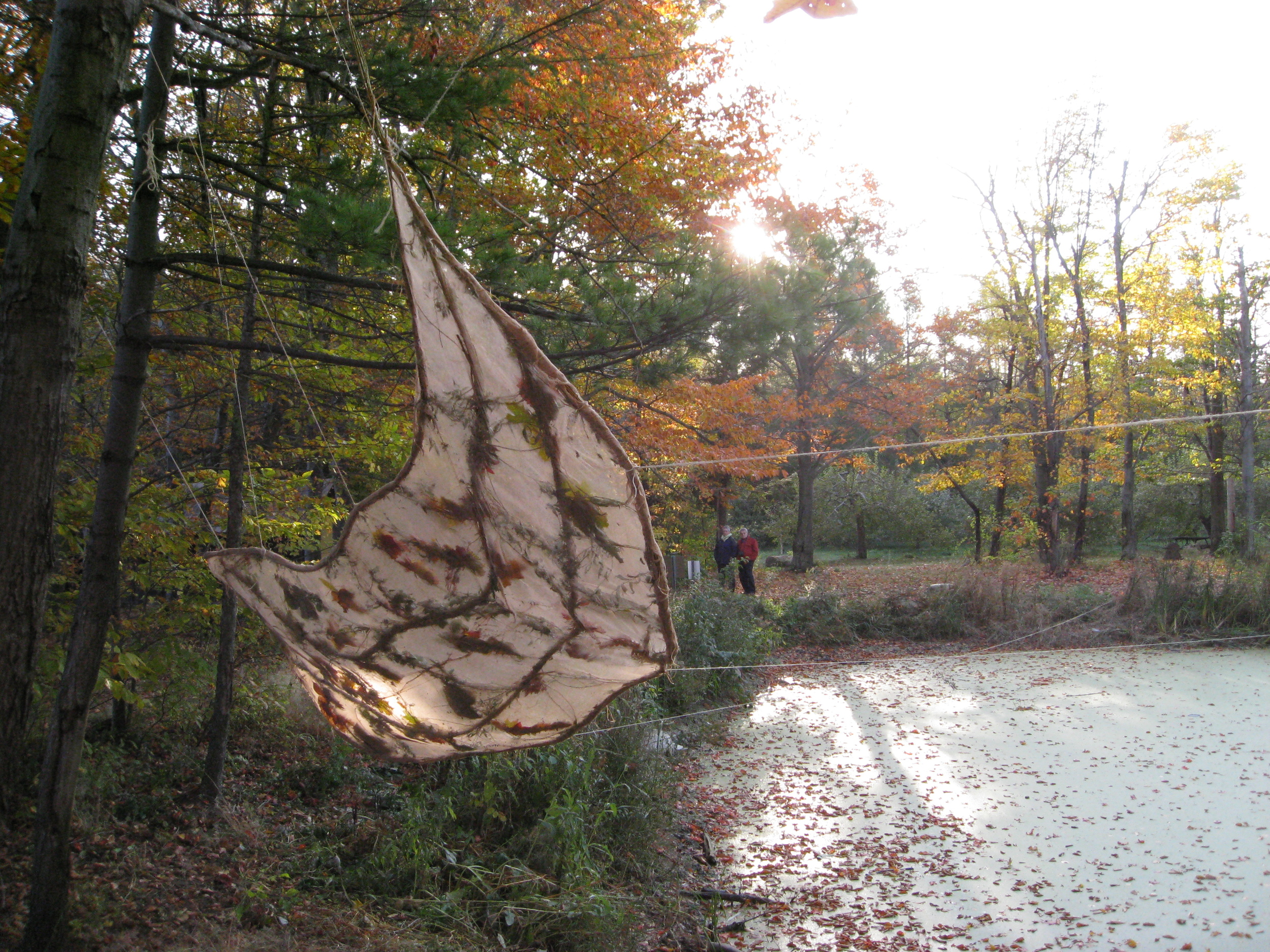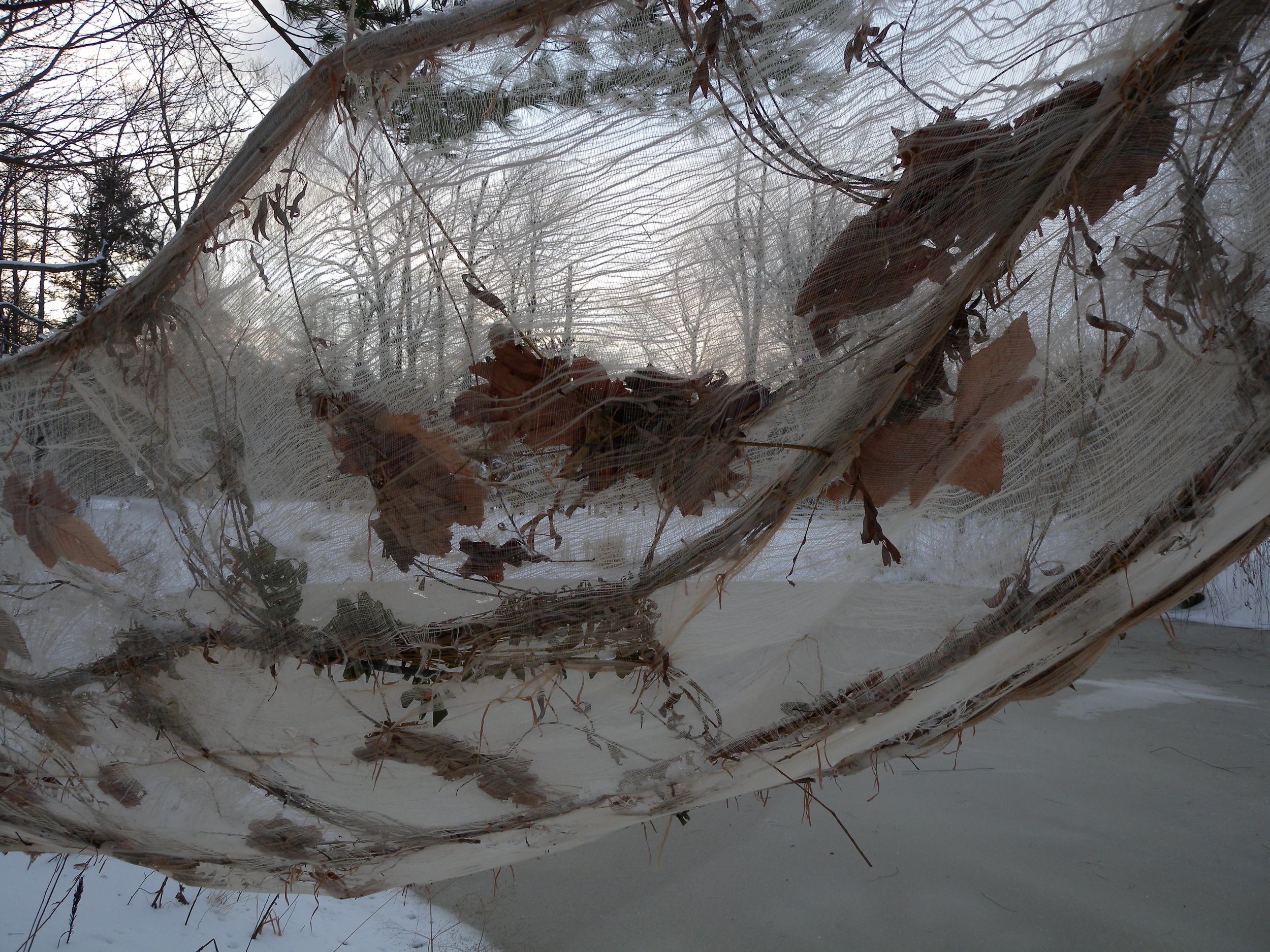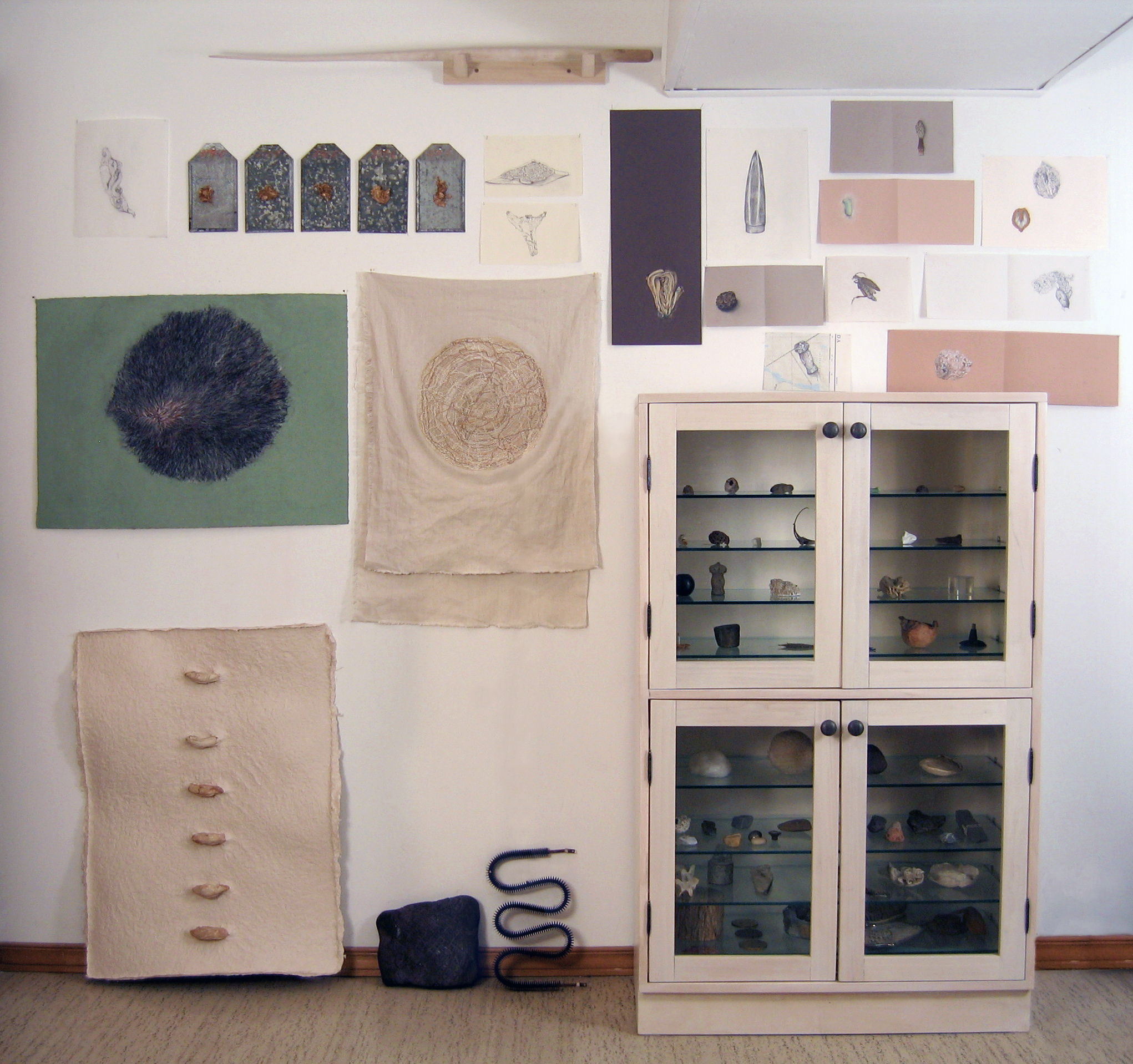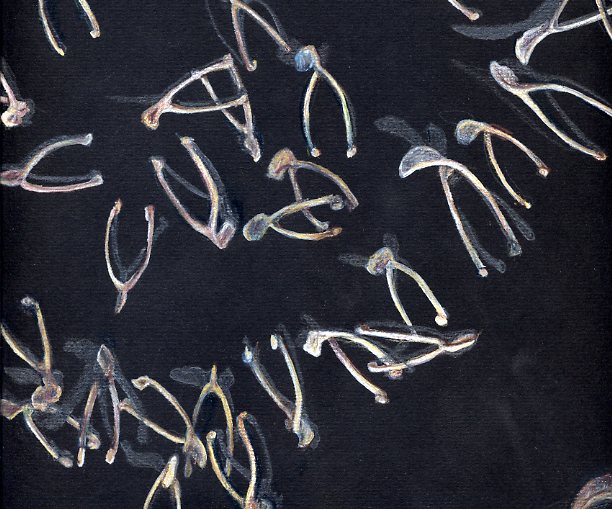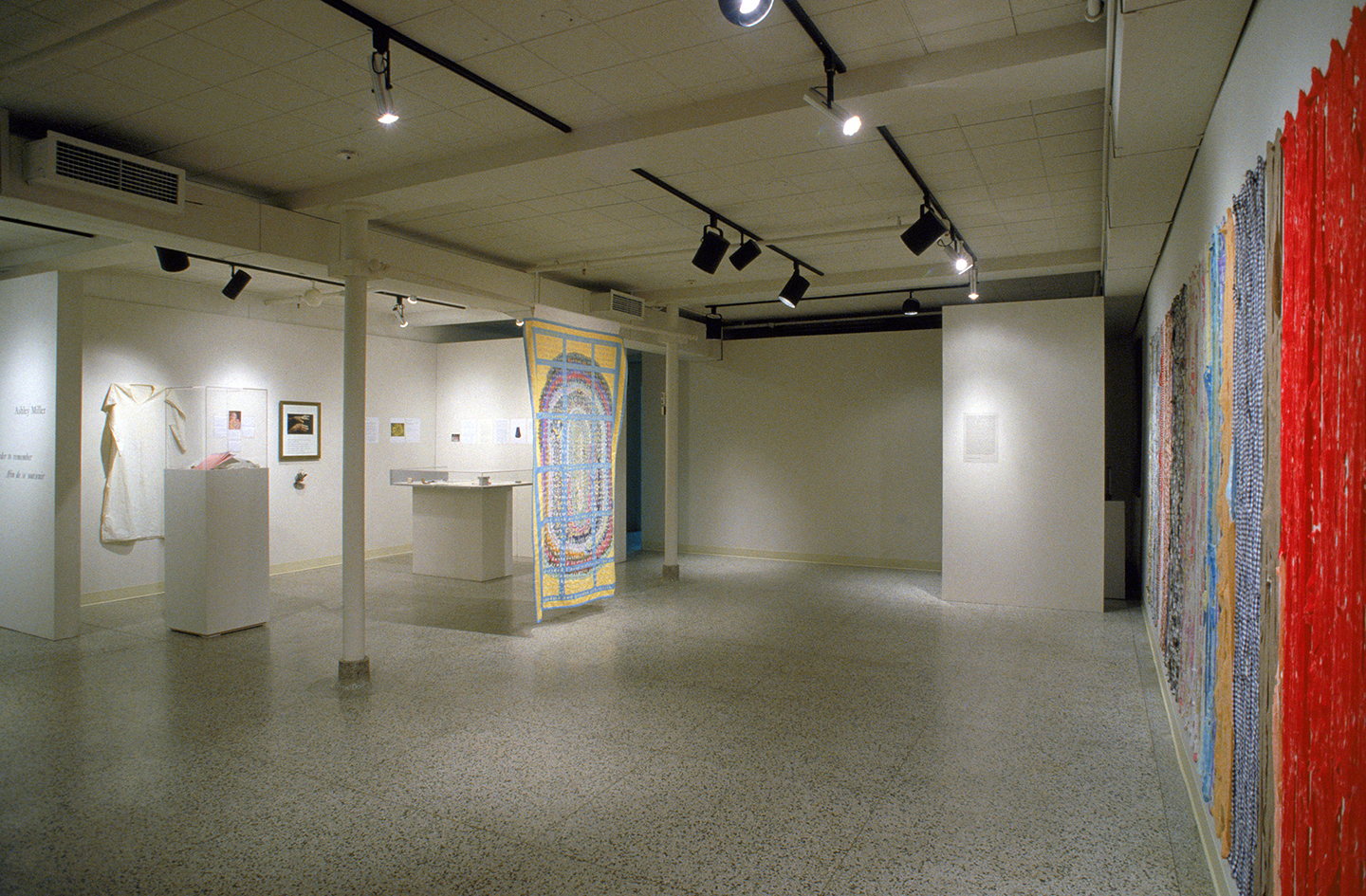MIRROR REFLECTIONS
2014
Do You See What I See ?
Mirror Reflections is a body of work based on a very particular and poignant object. About seven years ago I was given a hand held silver mirror, which had lost the actual mirror many years before. One day I was walking around in my garden, holding up the silver mirror to see what was reflected in the back. I became fascinated by the distorted layers of reflection in the silver surface and decided to photograph the mirror held in front of me, in various locations, using different points of view and different times of day. Sometimes the mirror functioned as a reflective surface; sometimes it blocked the view behind it. It was very seldom that I captured an actual reflection of myself. Instead, I held it at slight angles to capture the world around me. After a while of collecting images in this fashion, I began to edit them, exchanging one background for another, altering the image in the “mirror” as well. I came to see the mirror as a kind of window, into which I would peer, seeing myself, and the world around me, exchanging glances.
THE MIRROR AND ME
VIDEO MONTAGE
2014
This video was made as an extension of the body of work called Mirror Reflections. Continuing with the idea of the mirror as a window, I filmed and montaged myself and the mirror, juxtaposing and linking, interior worlds and exterior environments.
LES SAMARRES QUI TOMBE
INSTALLATION
2014
Vieux Prèsbytére,Centre D’Exposition
Du Vieux Prespytère, St. Bruno, QC.
HYBRIDS
2009 - 2014
Hybrids is a series of self-portraits, in which I am using nature as a sounding board to contemplate human temporal existence, and to ponder how changing physical form can be a sign post for something less fleeting. To do this I have collected images from nature such as blue skies, burls on trees, rotting cactus and melting ice, and collaged them onto and inside my body. The photos I have chosen to use of myself span over a period of more than 30 years. Each portrait captures a different period of time in my personal aging process, and in each one I am posing in a way that I feel is reflective of the power it is possible to possess during that stage of life. The elements from nature that I have fused with my body were chosen specifically to reinforce this idea, and to propose a surreal exchange of energy.
ROOM OF REFLECTION
2009
Vieux Prèsbytére,
Eglise St. Marc, Vieux Longueuil
In situ installation using video footage shot over a nine month period, in the exhibition space, looking through the windows, which were often covered by scrims. Visiting the space at different times of day, and throughout the various seasons, I captured what I saw in the windows. During the exhibition, video was projected onto identical scrims facing the windows on the opposite wall. There was a bench in the otherwise empty room between the windows facing the video projections. The proposal of this work was to slow down, observe and reflect upon the passage of time, and the beauty in every day moments.
VOL
2009
Créations-Sur-Le-Champ,
Mont Saint-Hilaire
Artists worked on site for 5 days, creating pieces that were integrated with the landscape. The site I chose was on the shore of a small pond that had been overtaken by a plant that cast a green glow on the surface. On the opposite shore was an old and very large weeping willow. Depending on the way the light hit both the surface of the pond and the spaces between the branches of the tree they were either translucent or opaque, shimmering or flat. I created a wing with woven branches from the willow, cheese cloth and leaves. It was stretched into place, hovering at the edge of the pond. Depending on the angle of the sun, and your point of view, the wing either revealed it’s inner structure, or presented as a light brown form.
FOR JOAN
A TEMPORAL ARRANGEMENT
IN MEMORIAM
2009
About 7 years ago, my friend, Elise Bernatchez, gave me a silver monogrammed mirror and brush set. The reflective surface of the mirror had been broken and lost for some time, and the brush still had wisps of white hair in it. I remember wondering about the history of these powerful and personal objects, and it took me quite a while before I felt like I could do them justice. In speaking with Elise about them; where they came from and what they represented to her, I decided that I needed to use them to honor the present, and their relationship to their former owner.
The mirror and brush had belonged to Elise’s mother, Joan Bernatchez. When I received them, Joan was in her early 90’s with a full head of thick silver hair. Understandably, Joan was proud of her hair, and agreed to pose for the photograph that covers the surface of the pillow. Joan died shortly before I finished the embroidery of her initials on the pillow, which are a copy of the monogram on the back of both brush and mirror. This saddened me because I am sure she would have appreciated this gesture.
In the end, my efforts to create an actual or current context for these objects was thwarted by what now seems to be a necessary twist of fate. So I offer this work in memoriam: For Joan.
NANA'S CABINET
2004 - PRESENT
Nana’s Cabinet is a re-creation of a display case my grandmother used for her rock collection. It is my cabinet of curiosities, in which I collect various objects, all of which have had a former life, and been discarded or forgotten. The collection grows, wanes and changes over time. Sometimes people bring me things, and sometimes I find them on my own. Periodically I open the cabinet and choose an object to draw. The drawings are meticulous and detailed, much like a documentary drawing done in the 17th century in support of natural science. I find drawing from observation to be one of the best ways to truly see the world around you, and for me a very particular way to understand these objects. As I draw them, I often find myself wondering about their former lives, and imaging the things that have befallen them, but mostly I just revel in the traces of their past and the interesting objects they have become.
IN ORDER TO REMEMBER
2001
“ ... somewhere beyond the reach of the intellect, and unmistakably present in some material object (or in the sensation which such an object arouses in us), though we have no idea which one it is. As for that object, it depends entirely on chance whether we come upon it before we die, or whether we never encounter it.” – Marcel Proust
The work for this exhibition began with a “material” object of the nature that Marcel Proust describes. This object was a rug that my mother gave to me when my grandmother died close to 20 years ago. The memories this rug carried for me never really surfaced or became important, until the day I came home to my puppy having chewed a bunch of holes in it. The sudden flood of memories this released lead me down a winding path. What surfaced in my mind was a portrait of my grandparents, a pondering of my heritage and a desire to create a tangible repository for their memory.
In Order To Remember is a form of documentary, where I am committing to a sculptural presence both verbal and nonverbal forms of narration. The quilt embodies verbal storytelling with its rambling text/remembrance, and an image of the original hand- made braided rug. This image takes on a certain poignancy in that it is digitally produced and printed onto fabric, which has then been hand embroidered and quilted.
In the second element to this installation the nonverbal comes into play. I have unbraided the rug, ironed the strips of rag, and attached them end to end in a continuous line, filling one wall of the gallery. In doing so I have exposed the physical history of the object, letting the signs of wear and age tell their own story. The deconstructed object is now an abstraction, and reinforces my questions about the tangible and the imagined or remembered.
The idea for the third element of this installation came to me while ironing and stitching the first two. I became interested in what stories others may have to tell, and what objects they had that helped them to remember these stories. I made a call to members of my family, friends and students, to share their memories of a person of importance to them that are triggered by a specific object. I asked them to loan me these objects or a photo of them, and to write down their stories. The responses I received were overwhelmingly generous and touching. The display of objects and texts was set up as the first thing one would see when entering the exhibition.
What began as a very personal pondering of heritage and memory has expanded to a curiosity about what, why and how we retain things from the past. I am interested in how we access memories, and how we construct our present perceptions of ourselves and our reality with them. Finally I am using this piece to contemplate how the feelings and ideas engendered in memory are a part of a shared pool of knowledge that connects us as human beings - past, present and future.
Marcel Proust, Swann’s Way, tr. C.K. Scott-Moncrieff (London: Chatto,1929; New York: Random House, 1928,p. 61.)

















